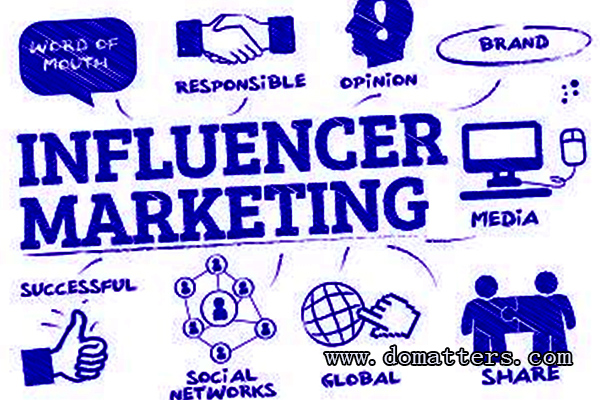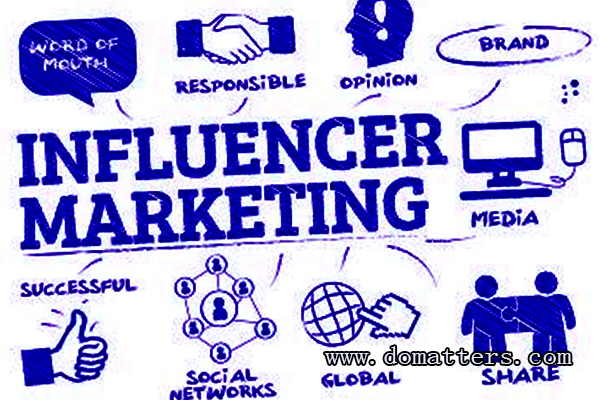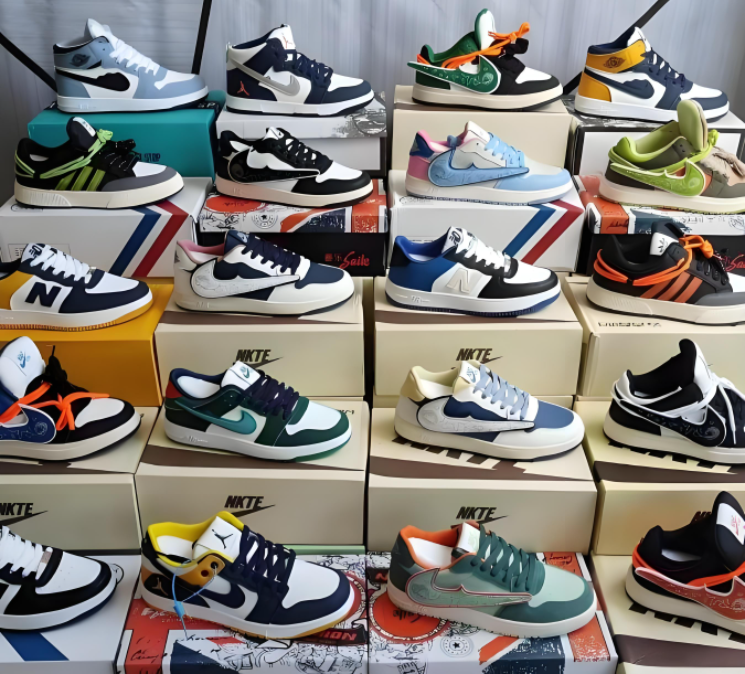The brands and agencies have always looked at influencer marketing incorrectly. So far, marketers have considered people with a large following as an influencer. Influence has been equated to reach rather than authority on a subject, or for the creative ways they communicate effectively to their followers.
Today, Domatters will take you to influencer marketing to open up new ideas for your brand promotion.
To date, brands and agencies have coined the phrase influencer by focusing on the glory of it, rather than what influence actually means, and what it achieves. By the end of 2018, trust became the key factor to successful influencer marketing – not just in the approach and relationship marketers hold with influencers, but in the content and messaging they authentically produce together. Or, to put it another way, in order to have any influence at all.

Now well into 2019, Domatters find that we are starting to leap forward and concentrate even less on the who and more on the how.
Influencers are rewriting the marketing script
The biggest opportunities in influencer marketing, for this year and beyond, lie in being more creative with the ways we work with influencers and refining what influence really equates to. Domatters should tell you that ‘think further than just a post’. Consumers are too savvy and too bored by endorsements and flat product mentions. They are influenced by the influencers they choose to follow, largely because they relate to them and trust them, are intrigued by them and their lives, or are in some way inspired. Surely, then, it makes sense to create content, campaigns and even products in collaboration with the influencer that captures who they are and what they stand for?
Domatters isn’t talking about an influencer putting their name to a brand-created cosmetics collection. Nor is Domatters likening transparency to just declaring a sponsored partnership. 2019 and 2020 are becoming the years where influencer marketing rewrites the marketing script and activates brands becauseof the influencer, rather than the other, more traditional way around.
Brands are creating products with influencers
Brands are already starting to do this. February saw Marks and Spencer became the first UK High Street brand to produce a collection with influencers. Having announced their partnership with seven leading fashion influencers for an exclusive footwear range, the collection will be released this summer. Before this, M&S were one of the brands leading the way to a digital-first shopping experience, allowing people to buy via Instagram’s shoppable posts and preview collections in categories via video.
Storytelling plays a significant role in influence
The secret to connecting with people using influencer marketing doesn’t just lie with collaborating with the right influencers, it is in the storytelling influencers can provide. With the M&S summer footwear campaign, each influencer shared their experience of working with the brand and how having their own shoe design on the High Street was a ‘pinch me moment’, to quote Erica Davies. This is what people relate to. There was no sell, no product description, no price – just a story, passion and heart. This is what provides an audience first connection. This is what starts and carries conversations. This is what carries influence.
Influencers are becoming business entities
Beauty start-up, Glossier owe much of their rapid growth to ‘regular women’, who already use the brand. The influencers they collaborate with are not only experiencing the product benefits simply by trying them, but are also empowered to become their own business entities. They are spreading the word and monetising their influence through a referral program that enables the brands more influential followers and fans to offer product discounts, and other incentives, to their own networks.
Domatters advises co-creating the brief with the influencer and using them to shape it from the word go in order to achieve this type of influence . Brand knowledge and campaign context will always be needed but, if you keep in mind the objectives and work with influencers to establish how they can help you achieve those, you’re more likely to harness the influence they carry.
Giving back to the community immerses that very community
Converse are another forward-thinking brand we can all learn from when it comes to working with influencers. From collaborating with designers and artists to create limited edition footwear designs, to allowing consumers to design their own and onto their Young and Lacedprogramme. This campaign recruited a creative group of males aged 16-20 and supported them over a year long period. Converse provided bursaries and challenges, encouraging them to create their own kind of content while building an organic relationship and affinity with the brand. Converse showed both understanding and relevance to their consumers and built long term relationships with the group, who quickly became brand ambassadors and successful creatives. These guys were brilliant but they were ordinary, and they only had 800 followers each. The point wasn’t reach, it was depth, with a campaign that gave back to the very community that its audience is made up of.
Five ways marketers can be more creative with influencer marketing
Drawing from the examples of these brands, the need to be more creative in our briefs, open in our mindset and more innovative in our approach, is now more necessary than ever. Make the same start we have at RocketMill and address influencer marketing in the following ways:
- Co-create don’t dictate: Involve influencers from the start and write the brief with them.
- Form trusting partnerships: Long lasting, transparent and trusting partnerships are how relationships between brands and influencers should be viewed and formed. Take a controlling and dictatorial approach and you will lose your goal, message and audience.
- Create people first experiences: Posts are no longer enough. Don’t tell people what, why and when they should buy. Instead, involve real people to empower them to be a part of what you have to say, carve the message out with them and let them tell it in their own unique way.
- Show you understand your audience: If you don’t speak the language of your audience – if you don’t show that you get what they’re all about, what they stand for – why should they get you? Brands have an opportunity to reach their audience by working with their audience – it’s that simple.
- Give people what they want: Identify the pain points on the user journey that turn people away, then create solutions to surpass them. Do the same with trends in the industry that your target audience are raving about. What are they? What do people want? Then do that.
Influencer marketing is the ideal route to hit all of these points – see it as the direct route to your audience that is made up of, well, your audience.
2019 will be the year influencer marketing produces people who become more than a brand ambassador, but brand creators, and brands in their own right. It will also be the year when influencer marketing finally gets recognised for the impact it can deliver and given the credit it deserves.
The grey areas, scepticism and criticism will fade and be replaced with creation, bold leaps and partnerships. And about time too.
We hope this blog will be helpful for you.Welcome to message us (click here) and simply fill in the information.Please feel free to enquire us!










